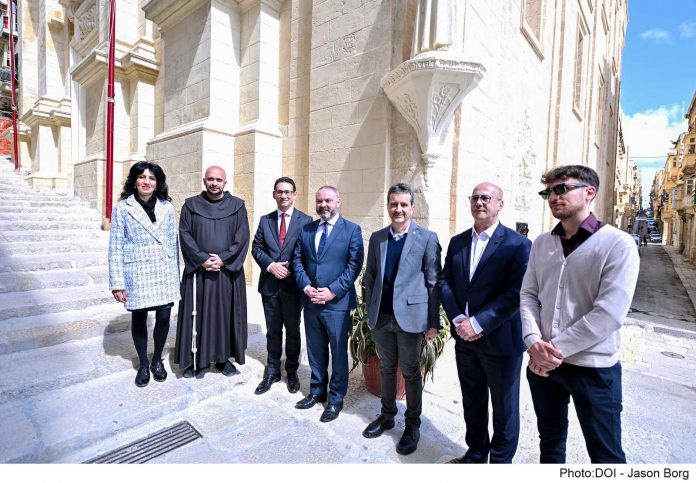The Minister for National Heritage, Arts and Local Government Owen Bonnici inaugurated the restored facade of the Franciscan Church of Giesu which is located on the corner of Triq San Ġwann and Triq Sant’Ursula in the City Valletta.
Minister Bonnici explained that this restoration was completed precisely so that the Church can be enjoyed in all its beauty during Lent and Easter; “the number of people who visit this Church is great, especially during Lent and Easter. I am sure that the awareness of this much-loved Church in the City will continue to increase and this restoration will help a lot so that this Church continues to occupy an important place in the hearts of Maltese and Gowis.”
Minister Bonnici explained that through the work and dedication of the workers, this restoration is helping so that this Church continues to be enjoyed again by both the Maltese and the tourists who visit these places.
The Architect Jean Frendo from the Department of Restoration and Preservation explained that since the front of the Church in Triq San Ġwann is located in a slightly narrow and shady street, it was characterized by a biological black crust especially in the cornices and the pediment, the stone was flaking and decaying in certain parts such as the frontispiece and thus a certain architectural detail was lost.
The restoration work on the Church started in October 2022 in Triq Sant’Ursula where the interventions included the work of cleaning, changing stones, plastering and filling the wires according to the need . Paint, cement coating and plastering done in the past have been removed with great care from the facade so as not to damage the original stone.
Before the work began, plans of the facades were prepared to show the forms of deterioration and the interventions to be carried out. Where stones were found to be excessively decayed, they were marked on the spot to be replaced with new stones of the same height as the original. The balustrades of the belfry were too corroded and had to be replaced. Plastering with a lime-based mixture was used to rebuild the stone surface where damage to the stone was limited to reduce stone replacement. Plastering the wires was also done with a lime-based mixture. Finally, a veil was given to the facade to soften the visual impact of the new stones.
The restoration work, which has now come to an end, was carried out under the supervision of the Department of Restoration and Preservation.










